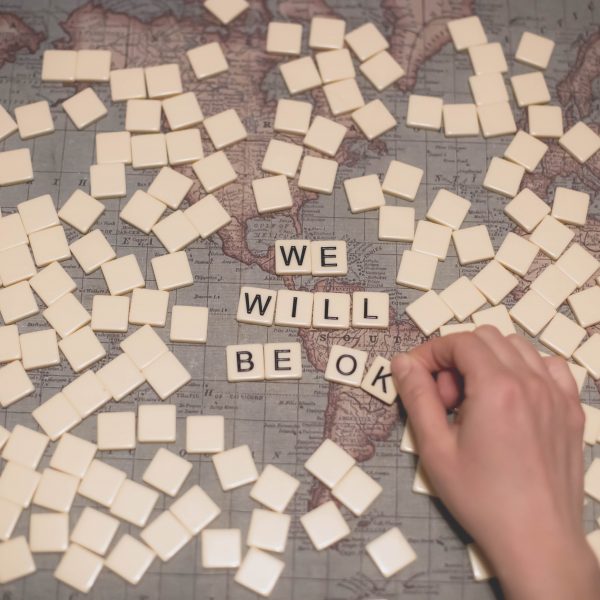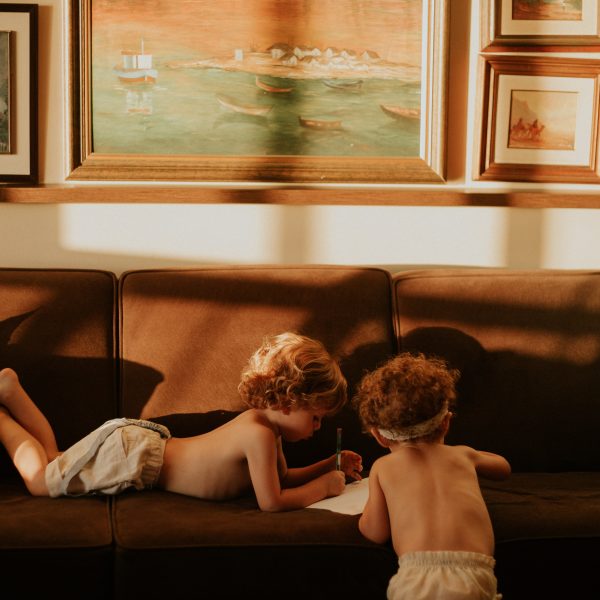The letterbox and beyond – a lesson in “flying by the seat of our pants”

While all of Australia watches the COVID-19 situation unfold in Victoria, the hearts of those working in early childhood education and care (ECEC) turn to their colleagues interstate, reflecting on what they might do to maintain connection with children and families if faced with the same situation.
With the support of the Community Child Care Association we are pleased to share the journey of Clarendon Children’s Centre (CCC), an Excellent rated service located in metropolitan Melbourne. In this piece Caroline Hamilton, a key educator in the Adventure Room (2-3 year old children) room, shares her experiences from “the front line”.
In early August 2020, when the Victorian Government announced Stage 4 restrictions, we learned that only children whose families held permitted workers permits would be able to continue attending onsite early childhood education and care (ECEC).
At Clarendon Children’s Centre (CCC) this meant that, within two days, the number of children attending was reduced to 25 per cent of enrolments and we had 75 per cent of our children at home, in lock down, with their families. We quickly had to change gear, totally rethink our program and explore other possibilities for teaching and learning, sustaining connections with children and supporting families.
We brainstormed ideas collectively and individually and one idea, deceptively simple and “old school”, struck a chord with the educator team….a letterbox
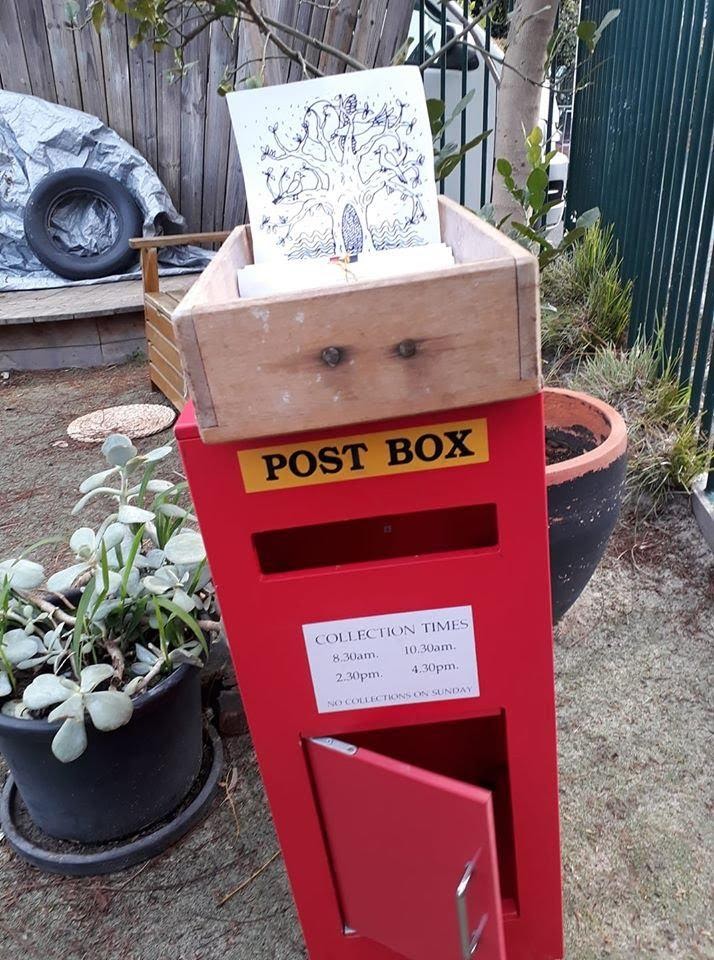
We had already established a Facebook group for CCC educators, children and families to connect and share, but thought a letterbox could introduce a physical means for the stakeholders to engage in a “hands on” communication system. The idea was to have a point of exchange to keep our relationships and programming alive.
I watched as the letter box idea flourished and, within days, it inspired communication, participation and enchantment, bonding the Clarendon community even further together in these complex times.
To begin, the educators posted a photo of the red letterbox on the CCC Facebook Group page and invited families to post us a letter. The response was immediate, with the first comment from one parent:
“This is a brilliant idea, you guys are fab! We’ll definitely pop past.”
Educators and children from the Nippers Room (birth – two years of age) went out to check the letterbox the next day but…no mail yet. A game of hide and seek in the letterbox was the next best thing and we kept on waiting.
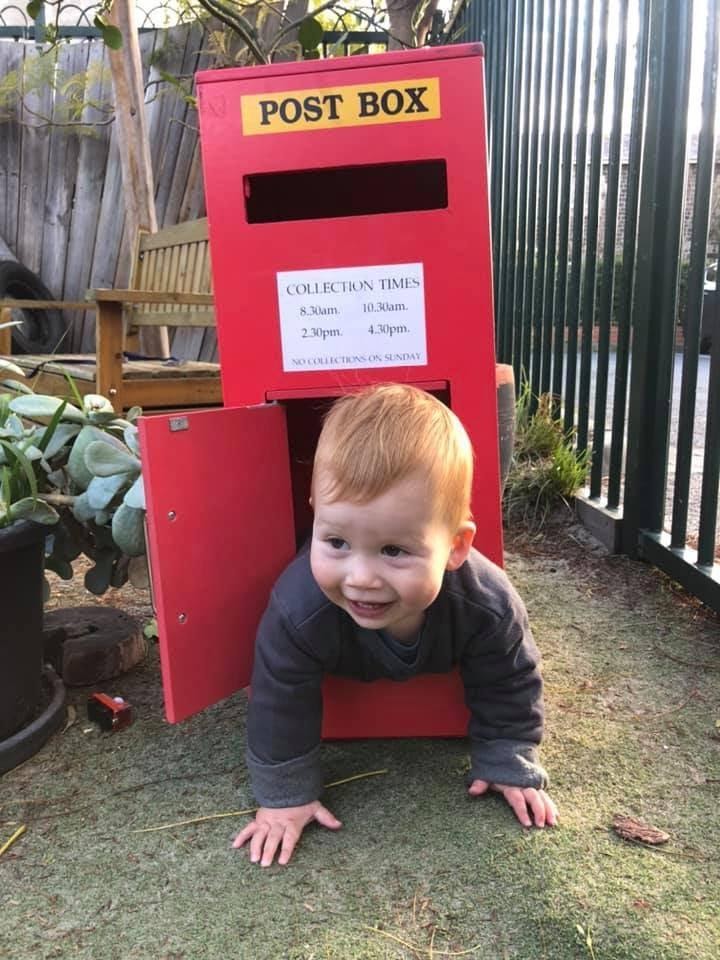
The next day, there was a lot of excitement – WE HAVE MAIL! To celebrate and document the event, we filmed the Nippers (educators and children) opening the letterbox together and discovering two precious envelopes!
After opening the envelopes, reading the letters aloud and sharing a wonderful drawing, we posted the video on the CCC Facebook page. Thus began the reciprocal cycle of families delivering their messages to the letterbox and then watching from home as we opened the mail and excitedly shared the contents with those children in attendance.
That afternoon, while we were out in the garden, the children were excited to see one of their peers arriving with her mother to post a “special delivery” and we uploaded a new photo on the Facebook page to encourage more families to join in.

We also put together craft packages which we left on top of the letterbox and invited families to collect as they went past. Some families then reciprocated with new craft packs of their own to share with other families – and also used the letterbox as the distribution point. The combination of the traditional letterbox with the contemporary communication tool of Facebook was creating lively, versatile, multi-faceted interactions that were developing right before our eyes.
A visit to the letterbox created excitement in the daily exercise for the children at home and an opportunity for a catch up chat up through the fence. The adults were very grateful for the children to be able to see their friends and pick up the little craft packs, as it broke up their day in isolation.
Imagine our delight as the dialogue continued and photos of creations made from the craft packs were uploaded to Facebook!

There was also a request in a letter from Hunter for his peers in the Magic Room to write and post a letter to his own “real” letterbox – he had enclosed his address so that we knew where to send it.

After receiving many letters from friends in our letter box, we thought it would be only fair to return the favour. So, we decided to post letters to our Nipper friends, the old fashion way. Enclosed in each envelope was a letter which required the children to construct a ‘card game’ of memory, by using their friends’ faces, furthering the connection with their peers.
The letter also contained a seed for them to plant at home and watch grow. Arlo helped to get the letters out by sealing each envelope with a stamp. We then filmed the children in the room posting these ‘legitimate’ letters into our letter box. And we told the children to expect mail in their own letter box. The letters were then taken and posted into an actual letter box, to go out to all the children. We then uploaded this video to the Facebook page and thus continued the cycle of the letterbox.
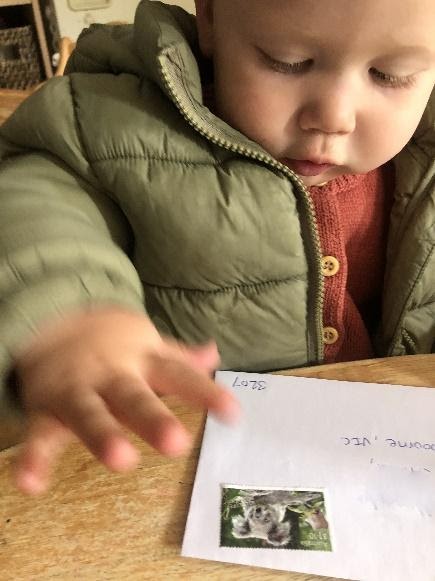
As a Zoom meeting played out between the children in the Adventure Room (aged between two and three years), with an Acknowledgement to country, then songs and dance (zoom-ba), we settled down for a chat.
We talked about how we would love to receive some drawings in our letter box and Maya, at home, requested a drawing from us. So the next thing, while still on Zoom, the children were lying on the floor drawing letters for each other to put into named envelopes, which were then “posted” later. Recognising this as a gesture of reaching out and friendship, Lillie said “I am being kind to Caspar.” We reflected that the Zoom meetings did not have to be overly staged or structured but more just about providing an opportunity to “be” together.
As the letterbox idea grew and expanded, we were also exploring other ways of connecting through Facebook. Educators are now regularly reading story books to camera and uploading the videos so that children at home can use these video story times as bedtime books.

Educators have also been posting craft ideas, (ie how to make playdough) and nature discovery walks. Ryan, our resident artist (educator) has posted a series of “in the making” cartoon clips, complete with special effects and music.
Our cook, Julie, uploads cooking ideas for nutritious, easy meals that children can help prepare at home as well as cooking demonstrations with different educators who share their own favourite dishes with the families.
Natalie has posted three lessons in Auslan, demonstrating the signs for family members, colours and animals, and has received multiple requests for more!
The Adventure Room will be having a Teddy Zoom Picnic Day next week. In the morning, there will be a Teddy Treats Zoom cooking class (with Julie) for families at home. Then, for afternoon tea we will host the Teddy Zoom Picnic – with children attending at the Centre and from home. According to the Adventure children, Teddies like broccoli crumpets and popcorn.
In just these first few weeks, our ideas have generated a tremendous response. As families and children continue to engage with us on the Facebook platform, Sally, the team leader of the Nippers Room, said that she feels this has enhanced her already open and trusting relationships with the (many “first time”) Nippers parents. Sally and her team’s experiences and knowledge of the Nippers children have highlighted the value of the educators’ role in their lives. There is ongoing consultation and advice given, in understanding and nonjudgmental support, as parents learn routines and “tricks of the trade” at home.
There has also been amazing communication between educators. As each educator bravely puts themselves “out there”, the support and encouragement from our colleagues deepens our mutual respect for each other and our delight and pride in each other’s strengths and talents.
Being in, or around, lockdown is very challenging and at the same time is giving us, the educators, opportunities to really explore what our children and our families need. It is stimulating us to explore, reflect and to do so “flying by the seat of our pants.”
Each day brings new insight into relationships and it is relationships which have been pivotal to our lives – in this community, at this present time. A relationship that is inspiring, open, vulnerable, supportive, trusting and kind. What better lesson can we teach our children?
Popular

Quality
Practice
Provider
Workforce
Reclaiming Joy: Why connection, curiosity and care still matter in early childhood education
2025-07-09 10:00:07
by Fiona Alston

Workforce
Policy
Quality
Practice
Provider
Research
ECEC must change now, our children can’t wait for another inquiry
2025-07-02 07:47:14
by Fiona Alston

Quality
Provider
Policy
Practice
Workforce
Childcare provider restricts male educators from intimate care duties amid safety concerns
2025-07-07 07:35:44
by Fiona Alston












